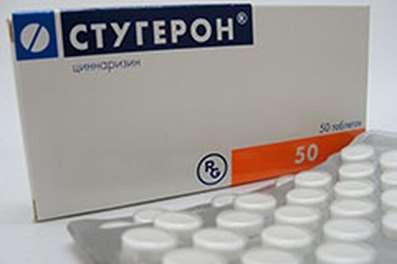Sleep - one day from the life of the brain
10 May 2018
What happens in our head when we wake up, open our eyes and realize ourselves here and now? And when breakfast, walk with a dog and then go to work? What processes are activated in our brain, when we, tired, return home, where an unresolved problem awaits us?
A piercing sound fills your skull. The misty veil that isolates you from the outside world evaporates as the signal becomes more and more intrusive. Fumbling in the dark source of noise, you finally restore the silence. But the devil's device has already done its job: you are awake. However, you are not yet immersed in the surrounding reality. The eyes are still closed, you feel the images slowly rise in consciousness ...
Neuroscientists have long known that unconsciousness of sleep has gradations. In fact, the previous night, you have passed about five cycles of sleep, repeatedly approaching the surface and deepest levels. During the first five or ten minutes, when reality is just beginning to "float away" from you, you were still relatively vigilant. If someone tried to wake you up, you might even say that you are in no way sleeping. This is the first stage, the beginning of the cycle and the beginning of your immersion in the unconscious.
Sometimes during this period you experience strange and extremely bright sensations, as if you fall or hear someone say your name. Sometimes the body seems to pierce a cramp - this phenomenon is known as the "myoclonic reflex": the muscles involuntarily contract, seemingly completely without a cause. During the first stage, if you had electrodes attached to your head, an electroencephalogram (EEG) would record a characteristic pattern of small and fast brain waves (theta waves).
Then, as you relax, over the next twenty minutes, the brain begins to generate additional complex electrical wave signatures (eight to fifteen cycles per second). This is the second stage. Then the body temperature decreases, the pulse slows down. It is at this point that you go from a shallow sleep to a deep one - this is the third stage. The profile of brain waves on the EEG slows down even more, the frequency ranges from two to four cycles per second. When these "delta waves" slow down even more, forming from half to two cycles per second, you enter the deepest, fourth phase of sleep. After about thirty minutes, the brain returns to the third phase, and then to the second. What for?
Undoubtedly, it would be simpler if unconsciousness remained simply a stable state. One possible reason is that a deep, almost comatose state can be fraught with for a long time: the world is full of dangers, one must be on the alert. In addition, the duration of the phases of sleep changes during the night: perhaps the brain adjusts to their needs. In the middle of the night, the fourth phase ends almost completely, and the fifth phase following it becomes dominant and lasts almost an hour.
The fifth phase is also called the "fast sleep" phase (REM), because your eyes actively move under closed eyelids. Meanwhile, the depth and frequency of breathing increases, the EEG reveals a profile of fast irregular waves, indicative of increased mental activity, comparable to activity during wakefulness. Dreams (which will be discussed in more detail later) are seen in this phase, although not throughout its entire length. Despite intense mental activity during this phase, your muscles, on the other hand, are the most relaxed, there is a sleepy paralysis: "fast sleep" is also known as a "paradoxical dream", because you seem to be conscious but immobilized. Just remember the situations that usually arise in nightmares when you try to escape from danger, but strangely find yourself immovable. This phase is repeated four to five times during the night.
But how is sleep monitoring controlled? It has long been known that the regulation of these cycles is based on the isolation of specific chemical transmitters, neurotransmitters. Acting as intermediaries between two neurons, these substances by diffusion move from one cell membrane (presynaptic) to another (postsynaptic) through a narrow slit - synapse: they run in the postsynaptic neuron pathway, causing "excitation" or "inhibition". In the language of neurobiology, inhibition is simply a reduction in the likelihood that a neuron will be able to generate an action potential (electrical impulse). Excitation is, on the contrary, an increase in probability. This vital electrical impulse lasts approximately one thousandth of a second (approximately 1 millisecond) and is a universal sign that the brain cell is active and signals this to the next cell. The excited neuron will generate volleys of action potentials at high speed, while the one that is "stalled" can be completely silent.
Transmitters controlling sleep, wakefulness and dreams are close in molecular structure to dopamine, noradrenaline, histamine and serotonin, together with the fourth, acetylcholine, a slightly more distant "relative", the most well-known and well-studied neurotransmitters. But the peculiarities of their distribution and localization are really of great interest: they can more than just make a connection between two neurons through a synaptic cleft, but instead they work on the principle of garden sprayers. Of course, there must be reasons for that. Each member of this chemical family plays a key role in controlling sleep and wakefulness. The levels of norepinephrine and its chemical precursor dopamine, as well as serotonin and histamine are highest during wakefulness, but decrease significantly during normal sleep and are practically absent in the fifth phase. Meanwhile, acetylcholine still "works". So what are these transmitters responsible for? It turns out that these molecules lead a double life and can act in a completely alternative role - as modulators.
The modulator does not cause immediate inhibition or excitation: instead, it affects how the brain cell reacts to the input signal for some time interval in the future. To better understand how this happens, imagine this situation: you work in the office, and today there was a rumor about raising wages. By itself, the rumor will not force employees, say, to pick up the phone of a silent phone. However, when a standard signal is received - a phone call, the employee will answer it faster and more willingly. The modulator works in the same way as this rumor: in itself it does not cause an effect, but strengthens the subsequent event. Theory and practice show that the classification of neurotransmitters as uniquely inhibitory or excitatory would be erroneous. It all depends on the time and the specific area of the brain in which they work.
So, for a certain period of time, the effects of the incoming stimulus (another transmitter) will differ in the presence of the modulator, up to the point that the effect of the stimulus can be completely leveled. Thus, the huge value of modulation lies in changing the time frame for signal transmission processes in the brain. Such fine regulation would never have been possible with a simple signal transmission. While you were sleeping and now when you are lying awake, the levels of these ubiquitous modulators rise and fall at different times, supporting different stages of sleep, placing large populations of brain cells more active or quiet. Therefore, it is very likely that modulators make an important contribution to the formation of consciousness and unconsciousness, as well as to the regulation of the transition between them. But we just found out that sinking into and out of sleep is a gradual process. This indicates that the modulators do not act as a key switch. Rather, they work as a kind of dimmer control ...

 Cart
Cart





